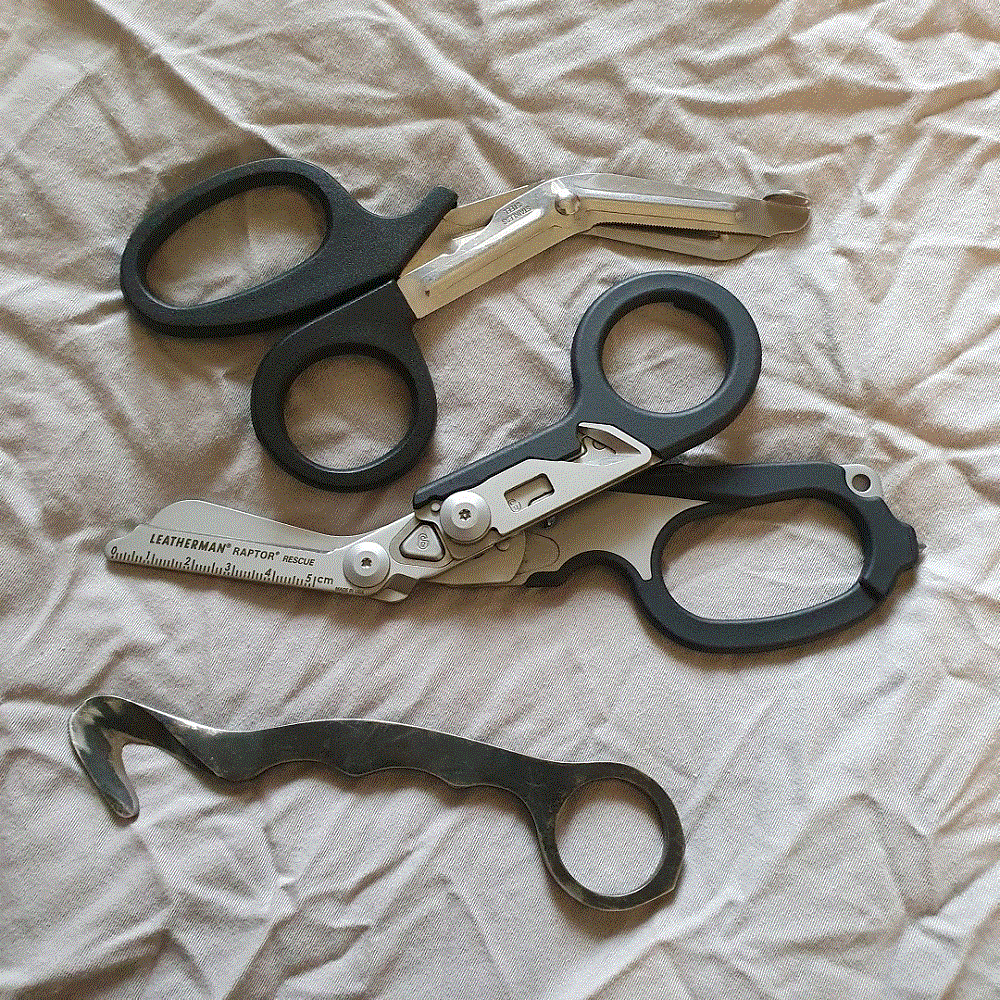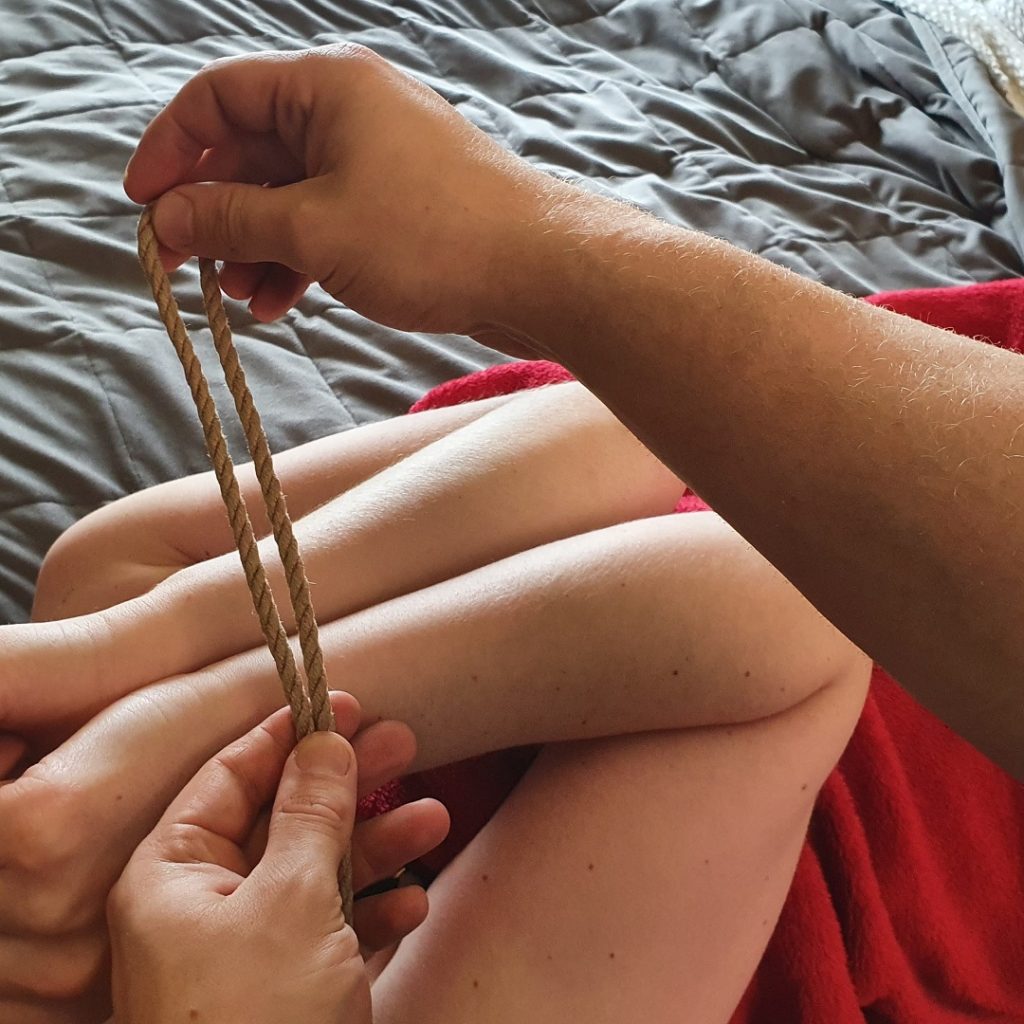Gear Information
In this section we will cover some of the basic information you will need to know about the gear used in Rope Bondage/Shibari, and some of the basic philosophy of handling rope.
In this section we will cover some of the basic information you will need to know about the gear used in Rope Bondage/Shibari, and some of the basic philosophy of handling rope.

Scissors have a tendency for their blades to bend away from each other when pressure is applied during a cut. This will damage the scissors permanently and they will no longer function. This may also happen during a cut if a partner panics and twists the scissors in the tops hand

